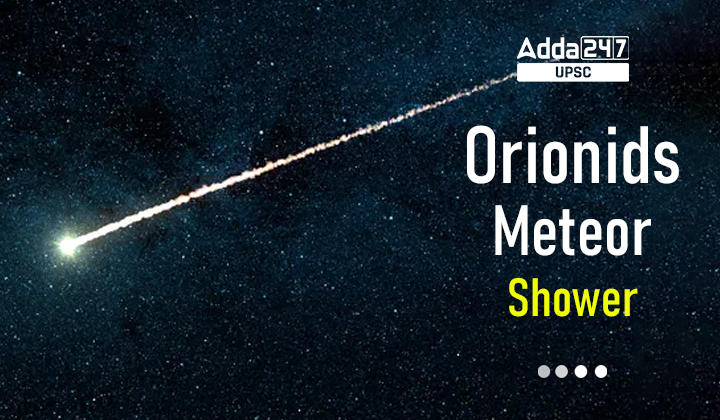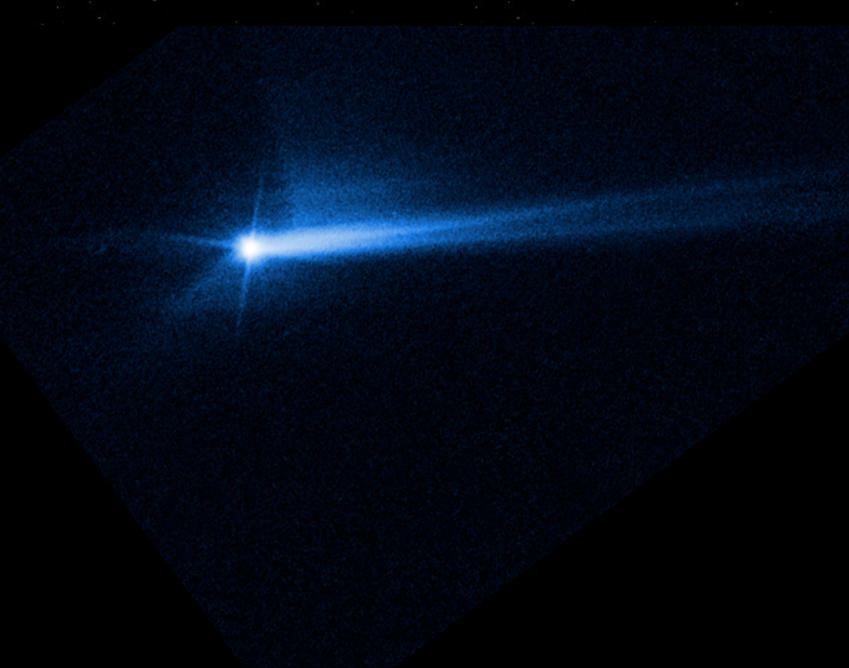Table of Contents
Orionids Meteor Shower: Relevance for UPSC
GS 3: Space Technology
Orionids Meteor Shower: Why in news?
- This year, the peak of the Orionids meteor shower will be between the night of October 20 and the morning of October 21, according to EarthSky.
- The Orionids meteor shower is caused by Halley’s comet and happens in October every year.
Orionids Meteor Shower: What is it?
- For a few days centred on Oct. 21 each year, the Earth sweeps through a swarm of meteoroids known as the Orionids; widely scattered bits and pieces shed by the most famous of all comets, Halley’s Comet.
- During its peak, we can expect to see up to 20 meteors per hour.
- Unfortunately, the peak happens when the Moon will be about 20 per cent full, but that will not completely interfere with the viewing.
Orionids Meteor Shower: What is special about Orionids?
- The Orionids are generally considered to be the third most reliable meteor display after the December Geminids and the August Perseids.
- Ancient Chinese chronicles suggest that the Orionids may have been first recorded in 288 AD.
- The Orionids, which peak during mid-October each year, are considered to be one of the most beautiful showers of the year. Orionid meteors are known for their brightness and for their speed.
- These meteors are fast – they travel at about 148,000 mph (66 km/s) into Earth’s atmosphere. Fast meteors can leave glowing “trains” (incandescent bits of debris in the wake of the meteor) which last for several seconds to minutes.
- Fast meteors can also sometimes become fireballs: Look for prolonged explosions of light when viewing the Orionid meteor shower.
- The Orionids are also framed by some of the brightest stars in the night sky, which lend a spectacular backdrop for these showy meteors.
Orionids Meteor Shower: What are Meteors?
- Meteors appear as streaks of light that are popularly referred to as “shooting stars” or “falling stars,” though they are not really starring at all.
- In reality they are grains of dust, which have been gliding for countless thousands of years in the spaces between the planets.
- When one of them happens to impact the Earth’s atmosphere, the flaming flash that is ultimately created is not what you might think, for the meteoroid itself is not what lights up at all; it is the incandescence of the air ahead of it that could not get out of the way fast enough!
Leonids Meteor Shower
Orionids Meteor Shower: Where Do Meteors Come From?
- Meteors come from leftover comet particles and bits from broken asteroids.
- When comets come around the sun, the dust they emit gradually spreads into a dusty trail around their orbits.
- Every year the Earth passes through these debris trails, which allows the bits to collide with our atmosphere where they disintegrate to create fiery and colorful streaks in the sky.
Orionids Meteor Shower: The Comet Halley
- The pieces of space debris that interact with our atmosphere to create the Orionids originate from comet 1P/Halley.
- Each time that Halley returns to the inner solar system its nucleus sheds ice and rocky dust into space.
- The dust grains eventually become the Orionids in October and the Eta Aquarids in May if they collide with Earth’s atmosphere.
- Comet Halley takes about 76 years to orbit the Sun once.
- The last time comet Halley was seen by casual observers was in 1986. Comet Halley will not enter the inner solar system again until 2061.
- The comet is named for Edmond Halley, who discovered in 1705 that three previous comets seemed to return every 76 years or so and suggested that these sightings were in fact all the same comet. The comet returned as he predicted, and it was named in Halley’s honor.
- Comet Halley’s dimensions are 16 x 8 x 8 km. It is one of the darkest, or least reflective, objects in the solar system, with an albedo of 0.03.
Origin of the Orionids meteor shower
- According to Time and Date, the Orionids meteor shower happens when the Earth passes through the debris left behind by Halley’s Comet and this debris burns on entry into the planet’s atmosphere.
- It is the second meteor shower caused by the comet, with the first one being the Eta Aquarids shower in May.
- Since the comet takes about 76 years to revolve around the Sun once, it will be next seen in 2061.
Halley: Phenomena behind the appearance of Meteor
- Entering the atmosphere at speeds as high as 45 miles (72 km) per second, atmospheric friction releases the kinetic energy of the object in a short-lived streak of light that we momentarily see about 60 miles (100 km) above the ground.
- The energy released per gram of the meteoroid’s weight far exceeds the energy efficiency of the most powerful man-made explosives.
- Thus, a pea-sized object can blaze across the sky with a brilliance rivalling Jupiter or Venus.
- Some meteors leave bright trails that remain in the sky for a few seconds or more, but most appear as just faint streaks.




 TSPSC Group 1 Question Paper 2024, Downl...
TSPSC Group 1 Question Paper 2024, Downl...
 TSPSC Group 1 Answer key 2024 Out, Downl...
TSPSC Group 1 Answer key 2024 Out, Downl...
 UPSC Prelims 2024 Question Paper, Downlo...
UPSC Prelims 2024 Question Paper, Downlo...
